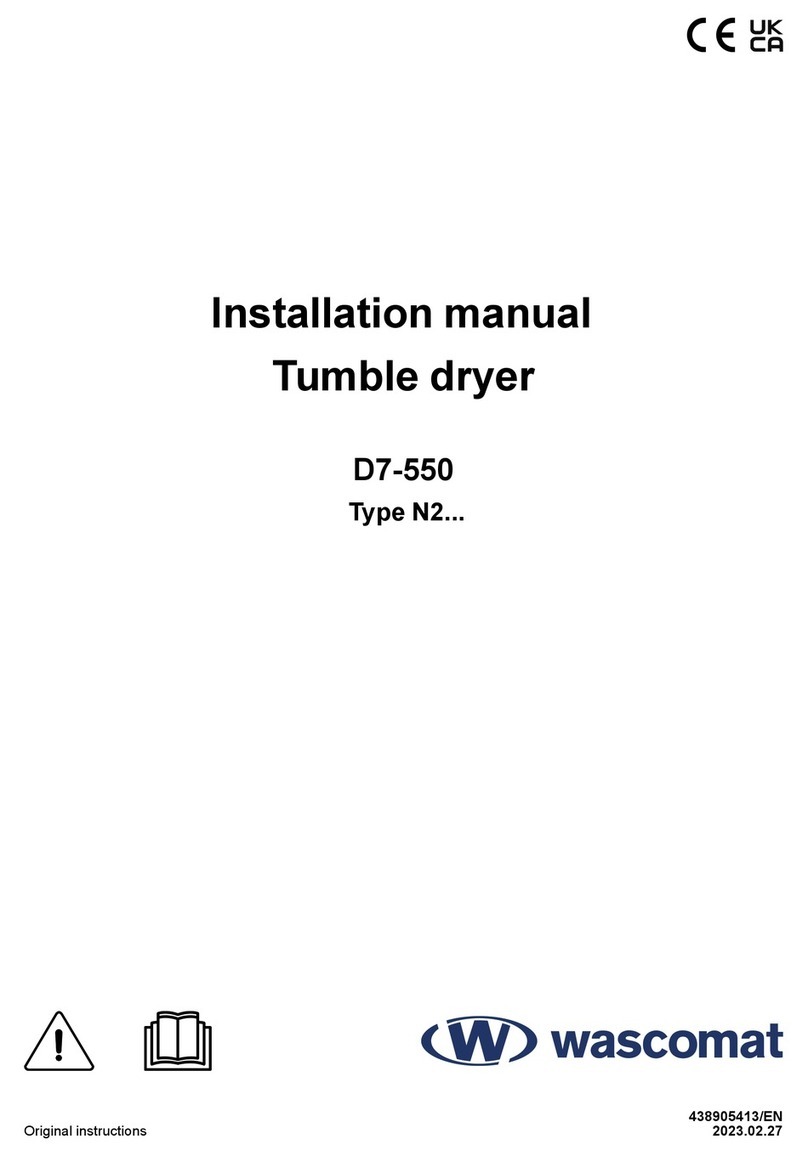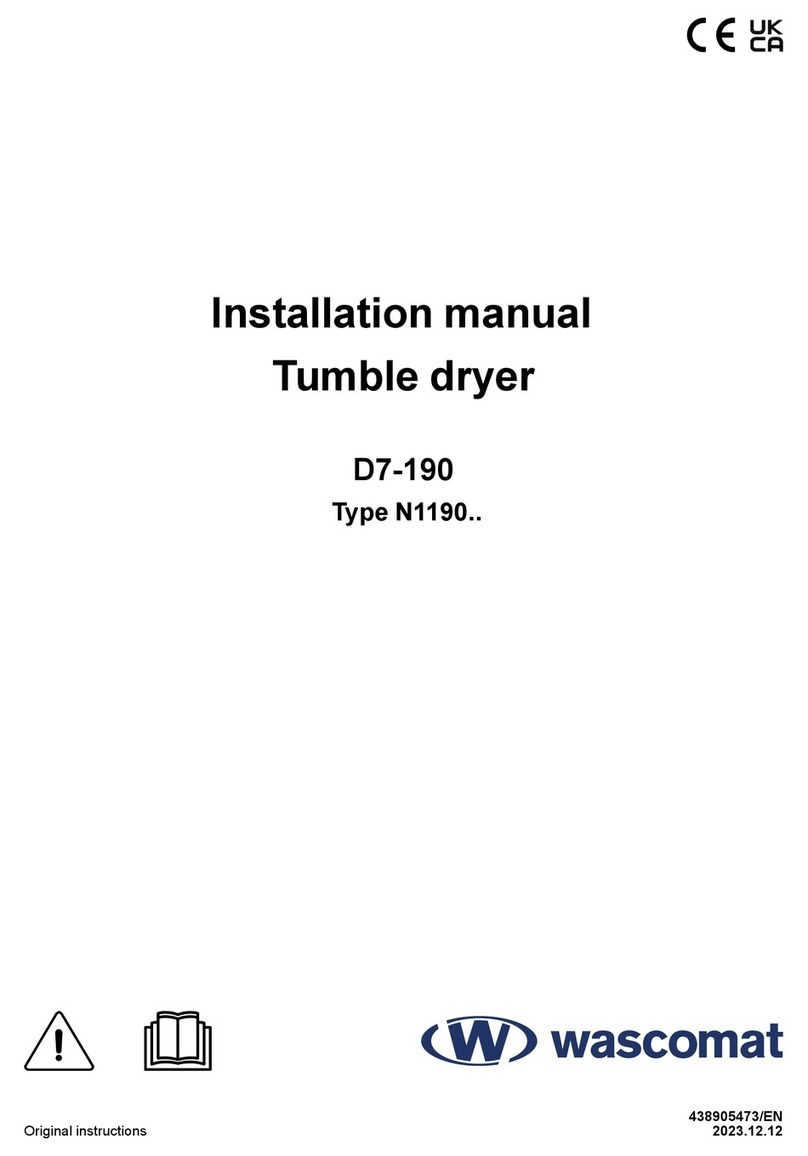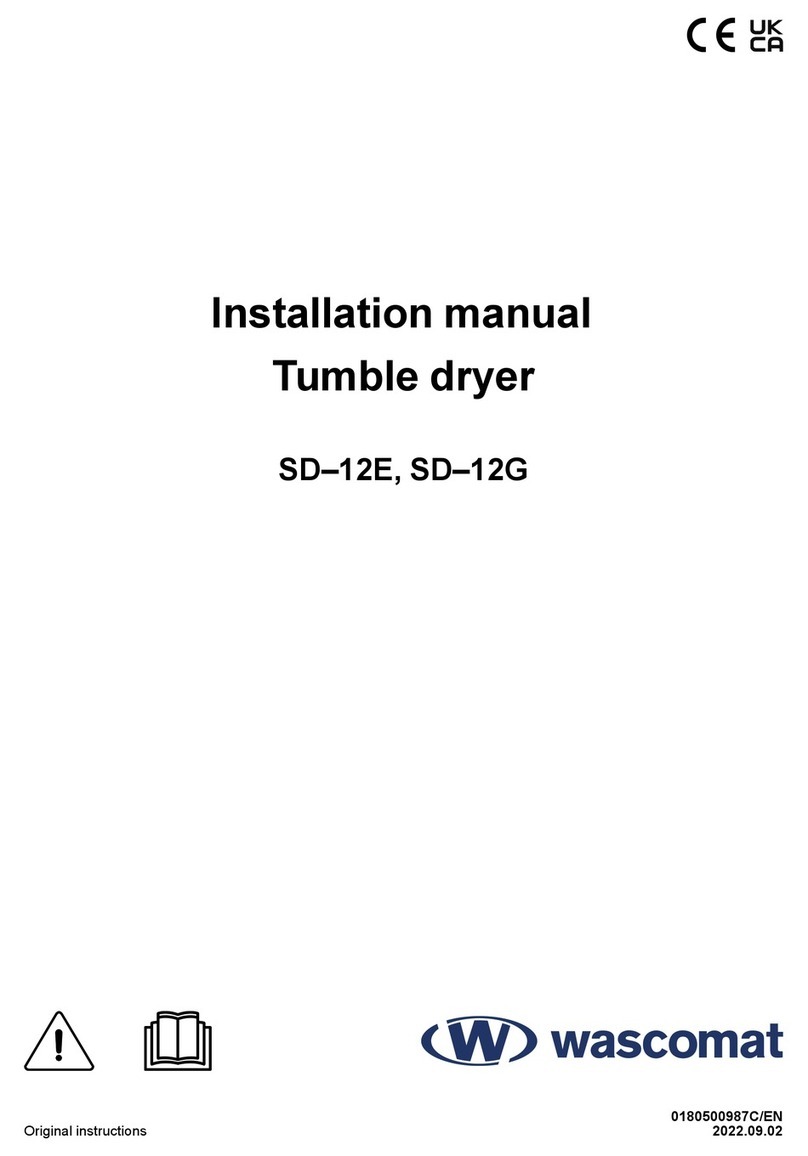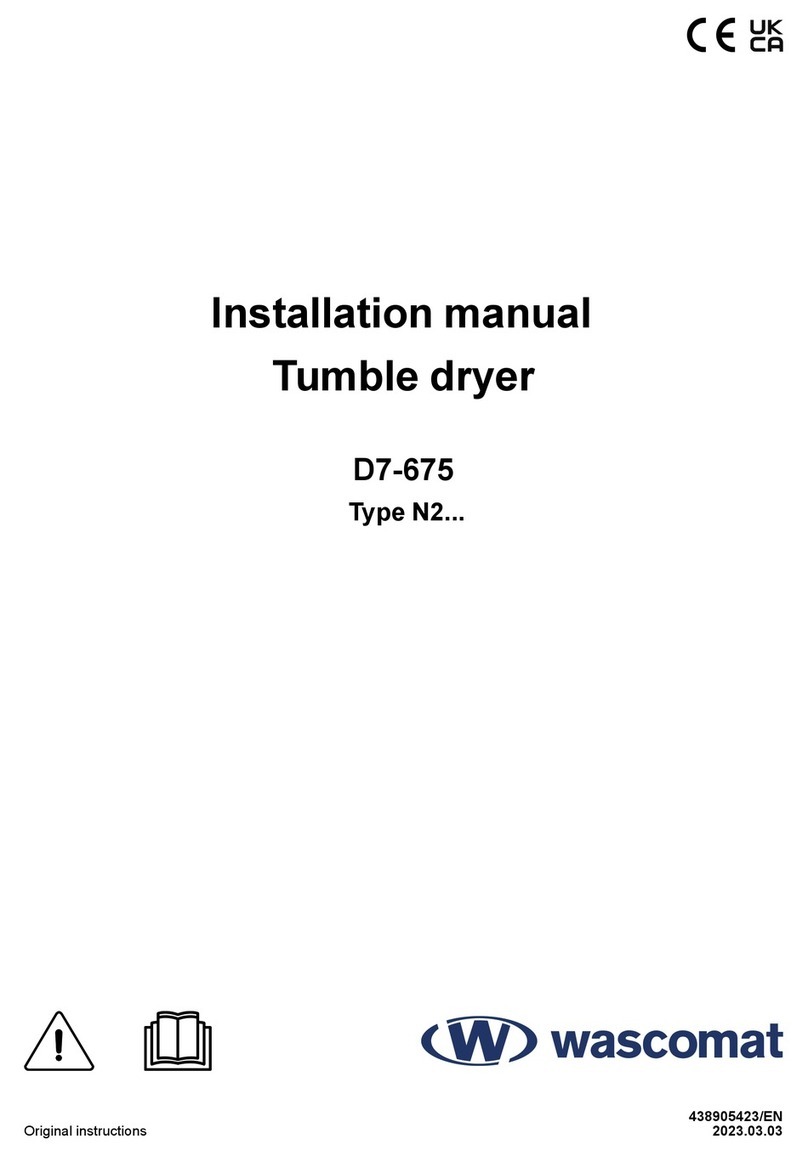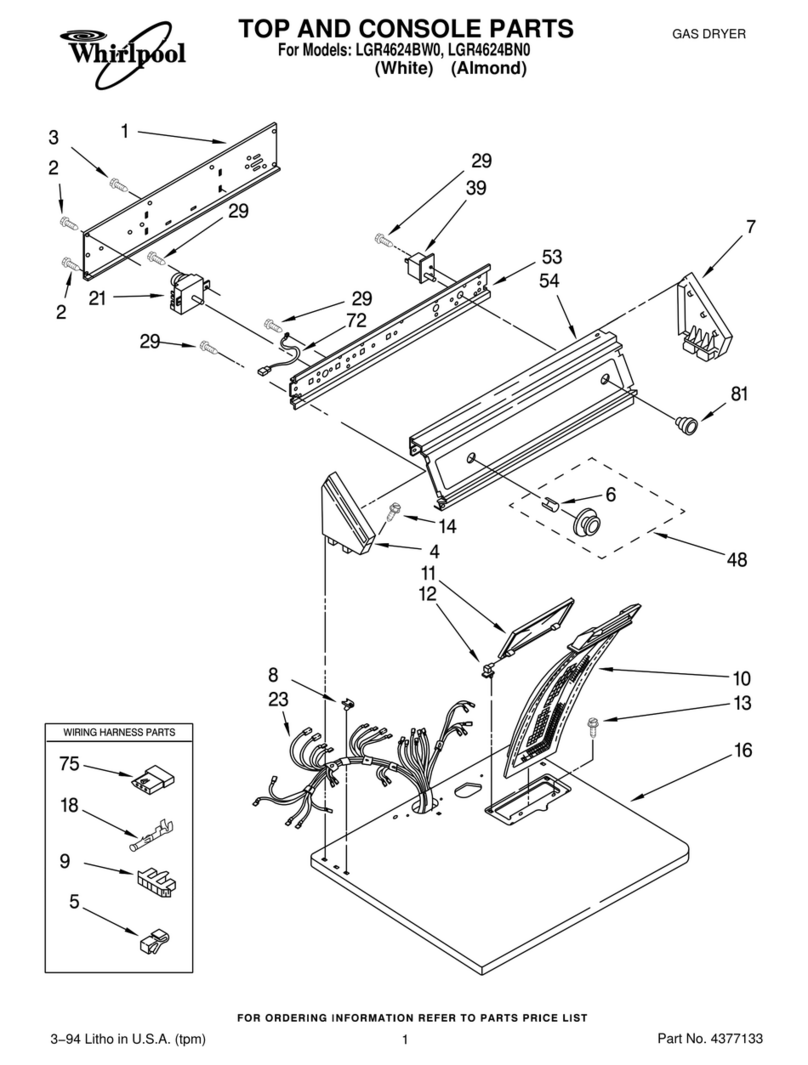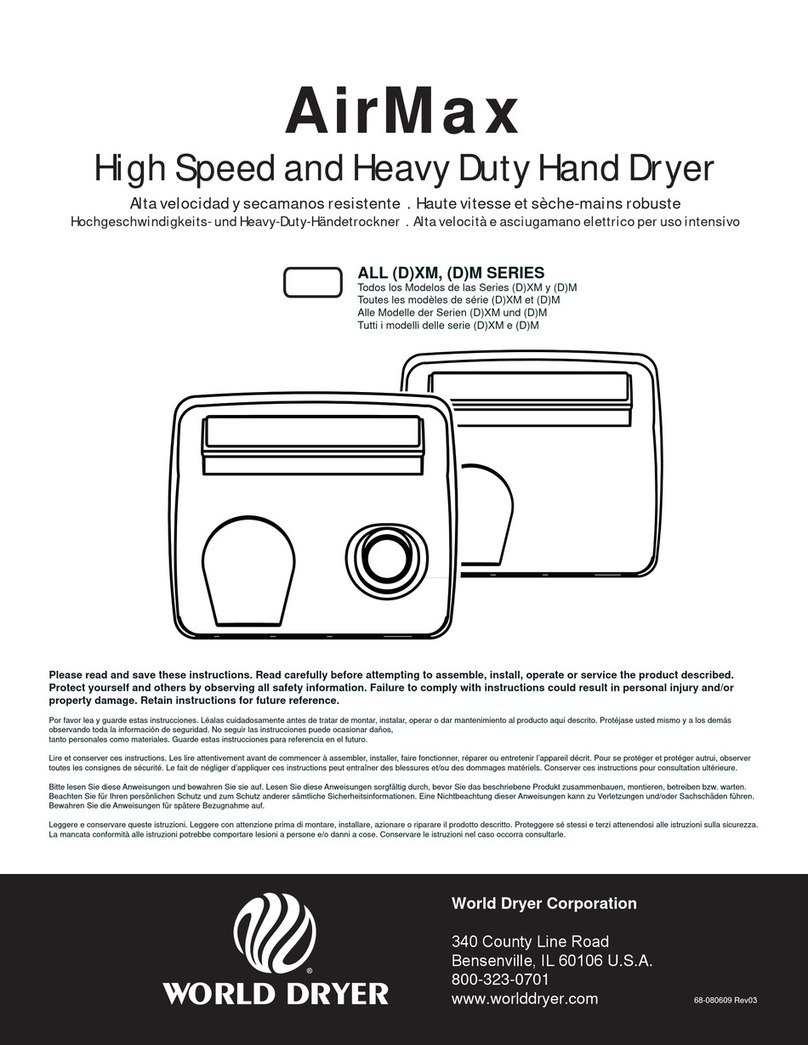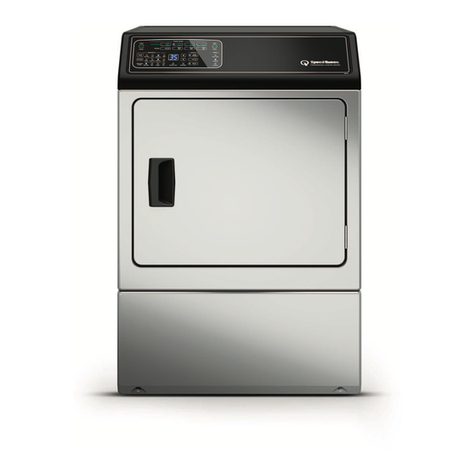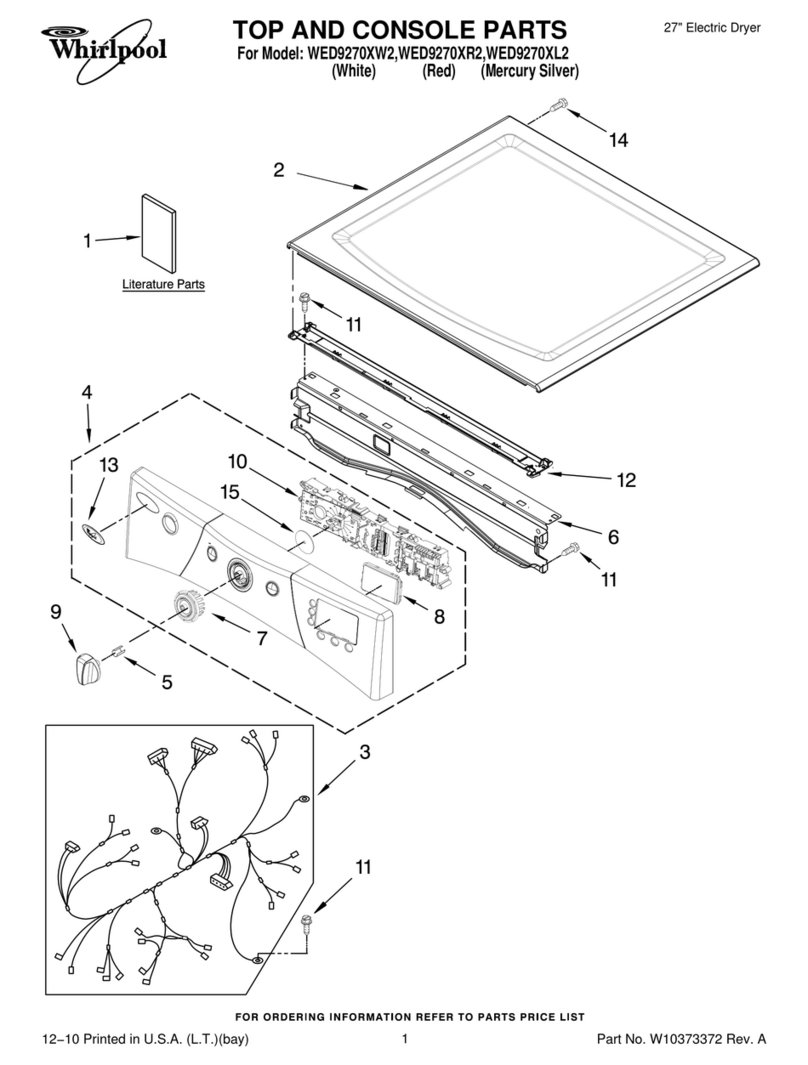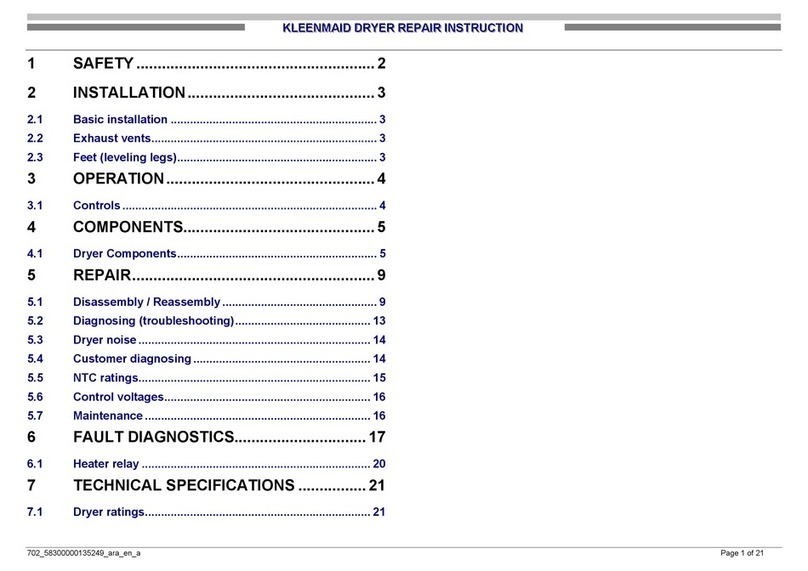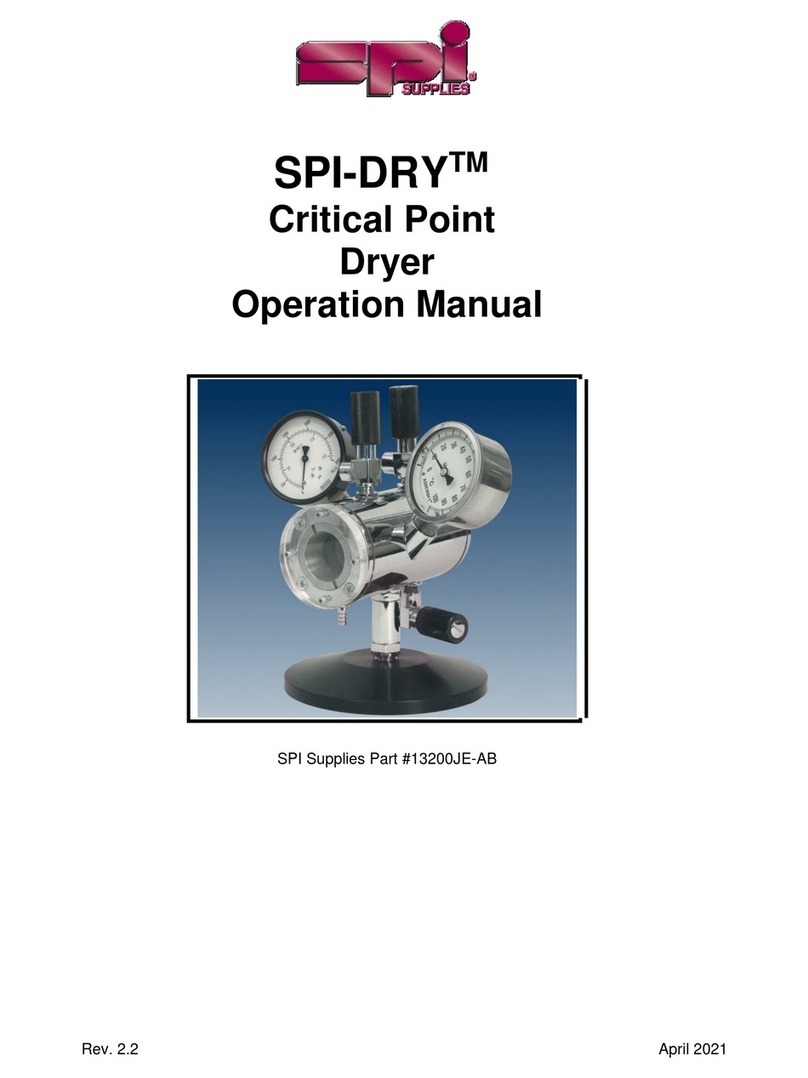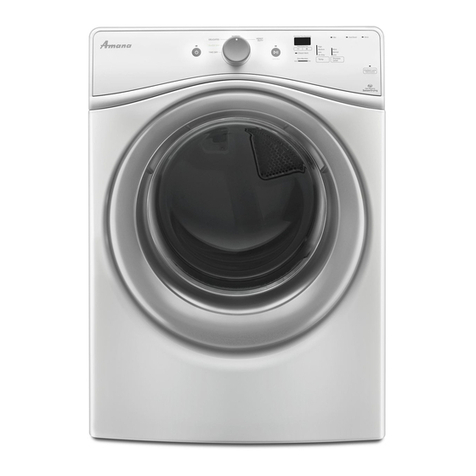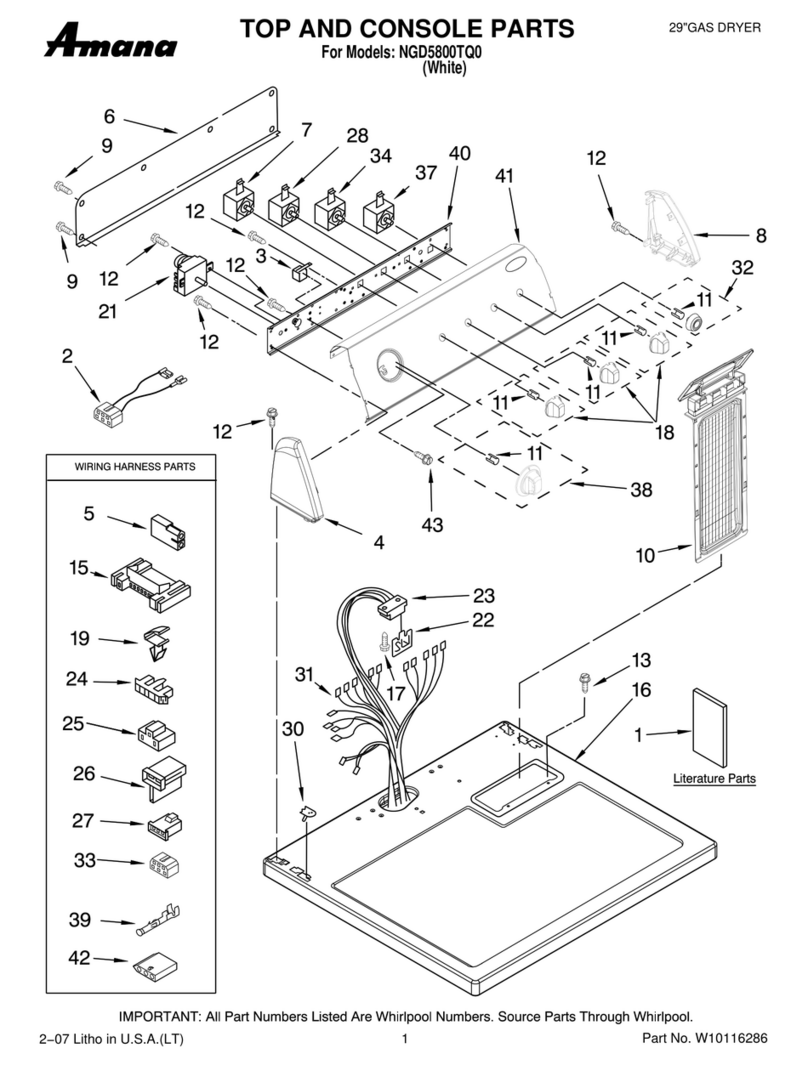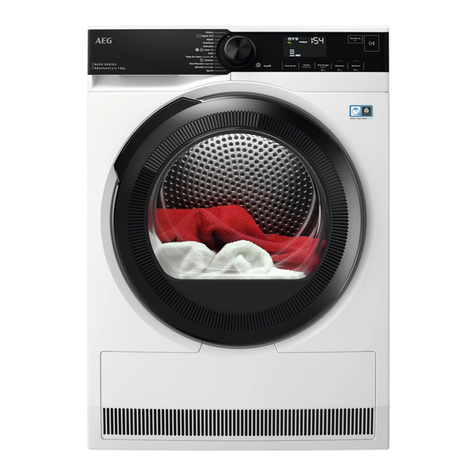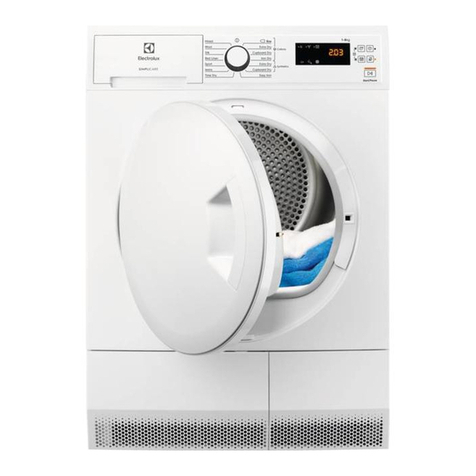
Safety Precautions
Warnings
1:2
1:3
Please observe all safety precautions displayed on the equipment and/or specied in the
installation manual included with the dryer. For your safety, the instructions in this manual must be
followed to minimize the risk of re or explosion and to prevent property damage, personal injury, or
loss of life.
• You must disconnect and lockout the electric supply and the gas supply before any covers or
guards are removed from the machine to allow access for cleaning, adjusting, installation, or
testing of any equipment per OSHA standards.
• Before installation, check that the local distribution conditions, type of gas and pressure, and
adjustment of the appliances are compatible.
• The dryer must never be operated with any of the back guards, outer tops, or service panels
removed. Personal injury or re could result.
• Failure to properly install, maintain, and/or operate dryer according to this manual and operator’s
manuals included with dryer may result in conditions that can cause serious injury, death and/or
property damage.
• Do not store or use gasoline or other ammable vapors and liquids in the vicinity of this appliance.
• Do not spray aerosols in the vicinity of this appliance while it is in operation.
• Purchaser and user should consult the local gas supplier for proper instructions to be followed in
the event the user smells gas. The instructions should be posted in a prominent location.
• For personal safety, the dryer must be electrically grounded in accordance with local and/or
country codes. In the absence of these codes use the National Electrical Code ANSI/NFPA NO.
70-LATEST EDITION or in Canada, the Canadian Electrical Codes Parts 1 & 2 CSA C22.1-1990
or LATEST EDITION.
• Dryer(s) should never be left unattended while in operation.
• When discarding or storing your old clothes dryer, remove the door.
• Label all wires prior to disconnection when servicing controls. Wiring errors can cause improper
operation.
• Do not dry mop heads in the dryer.
• Do not use dryer in the presence of dry cleaning fumes.
• The dryers must not be installed or stored in an area where it will be exposed to water and/or weather.
• Under no circumstances should the dryer door switch(es), lint door switch(es), or heat safety circuit(s)
ever be disabled.
• Do not modify this appliance.
• The dryer must never be operated without the lint lter/screen in place
• If the hi-limit thermostats trips, a service call is required to investigate the reason and resolve the issue.
• A program should be established for the inspection and cleaning of lint in the burner area, exhaust
ductwork, and area around the back of the dryer. The frequency of inspection and cleaning can best
be determined from experience at each location.
